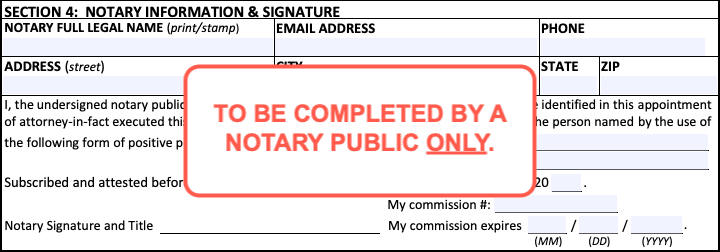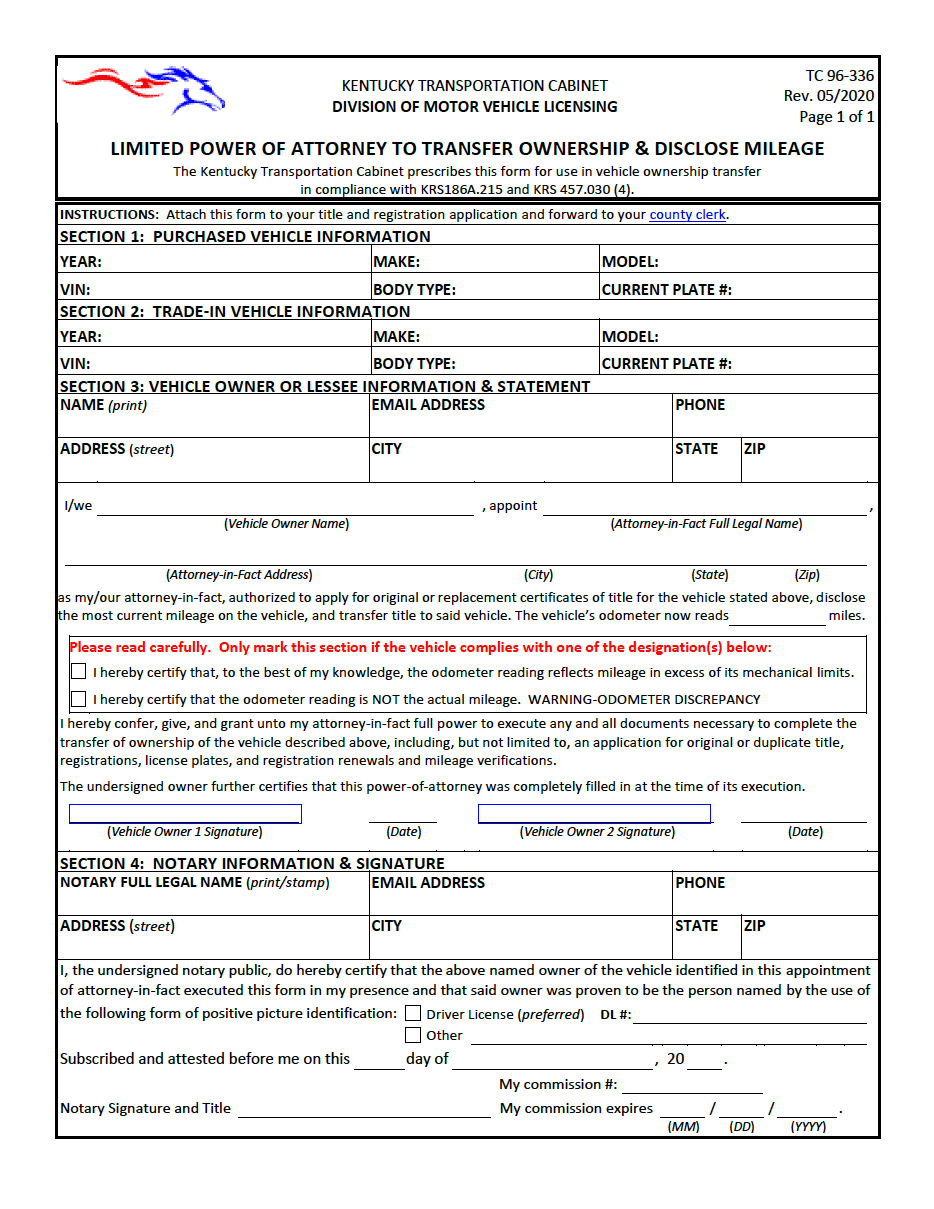Kentucky Motor Vehicle Power of Attorney Form
A Kentucky motor vehicle power of attorney (Form TC-96-336) is a form that empowers an attorney-in-fact to manage car-related tasks for a vehicle owner, company, or lessee. The person completing the document must enter the vehicle’s identification information under the appropriate category (i.e., purchased or trade-in). Required fields include the car’s year, make, model, vehicle identification number (VIN), body type, and current license plate number.
| Signing requirements: Must be signed by the vehicle owner and Notary Public. |
What is a Kentucky Motor Vehicle POA?
A Kentucky motor vehicle power of attorney supplies legal evidence of the permission granted to a person for the purpose of acting in another person’s place. In other words, the assigned individual can complete tasks that the owner would be able to if they were present.
The form enables an attorney-in-fact to apply for an original or duplicate title, disclose mileage, and/or transfer the title. Additionally, the attorney-in-fact can sign documents for the vehicle, apply for registration (or a registration renewal), and apply for a new license plate.
Upon notarization, each party must bring a form of photo identification to prove their identity. Once the Notary Public witnesses the signing, the owner or attorney-in-fact must send the completed original copy to the county clerk.
How to Write
Download: PDF
Step 1 – Car Details
Write the car’s information in the appropriate category (i.e., purchased or trade-in vehicle)
- Year (e.g., 2015)
- Make (e.g., Subaru)
- Model (e.g., Outback)
- VIN (Vehicle Identification Number)
- Body Type (e.g., Hatchback)
- License plate number

Step 2 – Personal Information for Vehicle Owner and Attorney-in-Fact
Provide the car owner’s (or lessee’s) name, email address, phone number, and home address. Re-write the owner’s birth name on the line provided, and note the name and address of the representative (attorney-in-fact). Then, input the vehicle’s current odometer reading.

Step 3 – Odometer Certification and Owner(s) Signature
Pick the box if the odometer mileage exceeds the car’s mechanical limits and/or the odometer reading is NOT the actual mileage. If these do not apply, leave blank. The owner(s) then write their signature(s) and the date, using a Notary Public to acknowledge the signing.

Step 4 – Notary Information and Signature
The Notary Public must enter the following details:
- Full legal name (printed or stamped);
- Email address;
- Phone number;
- Street address;
- City, state, zip code;
- Vehicle owner’s driver’s license number or another form of photo identification;
- Signing date;
- Commission number;
- Date of commission expiration; and
- Signature and title.

